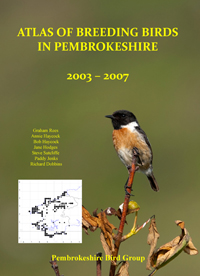Lesser Black-backed Gull - 2003-07
 Wednesday, May 9, 2012 at 6:08PM
Wednesday, May 9, 2012 at 6:08PM Formerly the main colonies were confined to the islands of Skomer and Skokholm with a few on Caldey, St Margaret’s and Ramsey and occasionally on the mainland cliffs. Mathew (1894) knew of colonies of 20 – 30 pairs but there were around 2,000 by the middle of the century (Lockley et al 1949). The population increased dramatically from the early 1950’s, to peak at around 20,000 pairs on Skomer and 5,000 on Skokholm in the mid-1980’s.
This increase was fuelled largely by a ready source of food in the form small fish that were a discarded by-catch of the scampi fishery in the nearby Smalls grounds. New legislation introduced in the mid-1980’s changed the mesh size of the nets so that fewer small fish were caught and this food supply was lost to the gulls in a very short period. The result has been almost very low breeding success, including total failure in some years, from 1989 to the present day and a resultant steady decline in the number of gulls. Numbers of Lesser Black-backed Gulls breeding on the mainland coast have increased in several places in the last 20 years, with a gradual spread in distribution during this time, but the population here is small.
Over 95% of Lesser Black-backed Gulls in the county breed on Skomer, Skokholm and Caldey Islands. They are found in large colonies wherever there is good cover for chicks and prefer a bracken/gorse/thick grass habitat. In 2007 the county population was around half of the peak at c. 13,000 pairs and continuing to decline because there are so few immature birds entering the breeding population.
Steve Sutcliffe

Fieldwork 2003-07 (based on 490 tetrads)
Red = breeding confirmed = 30
Orange = breeding probable = 6
Yellow = breeding possible = not included
Total tetrads in which registered = 36 (7.3%)


Reader Comments